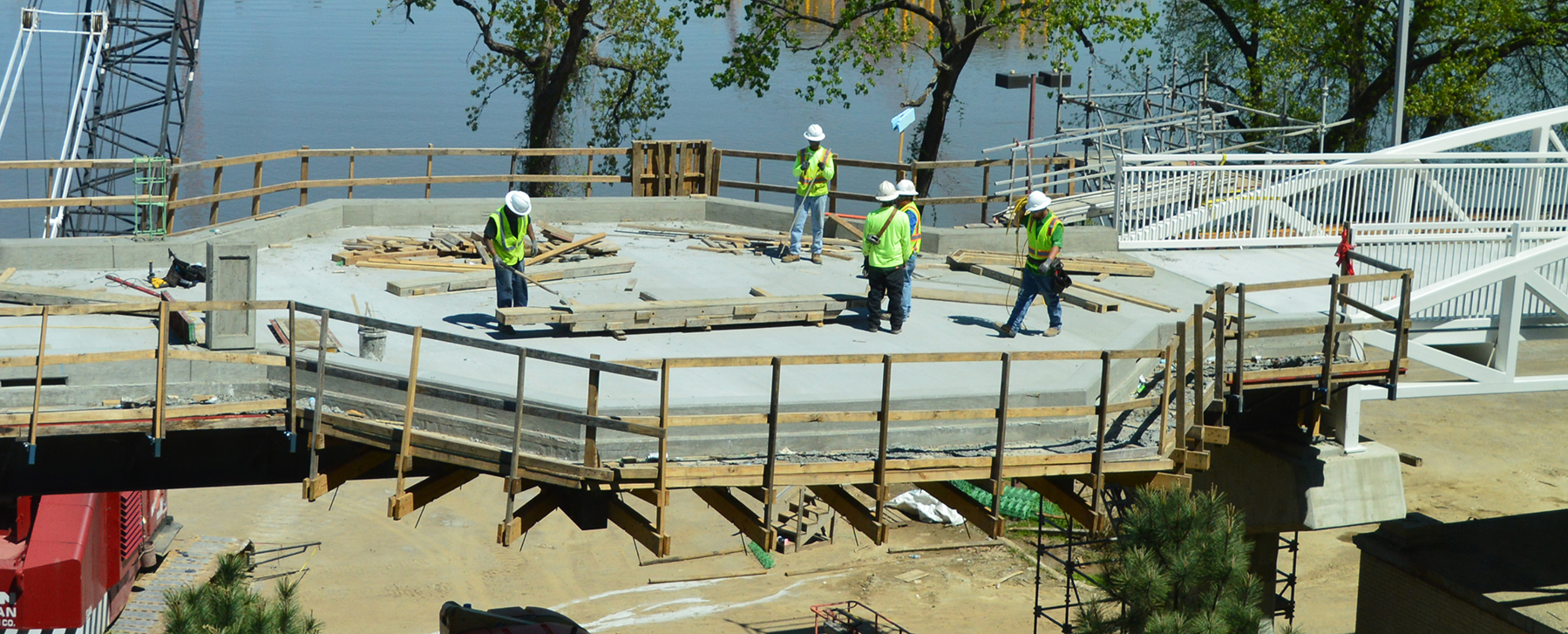Central Arkansas Snapshot
Chapter 2 of Transforming Mobility provides a snapshot into Central Arkansas—its population, economy, transportation system, land use, and equity concerns. Understanding the current state of our region is essential for benchmarking progress, outlining needs, and identifying challenges and opportunities for growth. This MTP, and the planning documents appended herein, have been written with the data in mind. Chapter 2 sheds light on and informs policy decisions in Chapters 3 and 4.
POPULATION
Central Arkansas is…
Growing. But slowly. And older.
Central Arkansas’ median age in 2022: 38
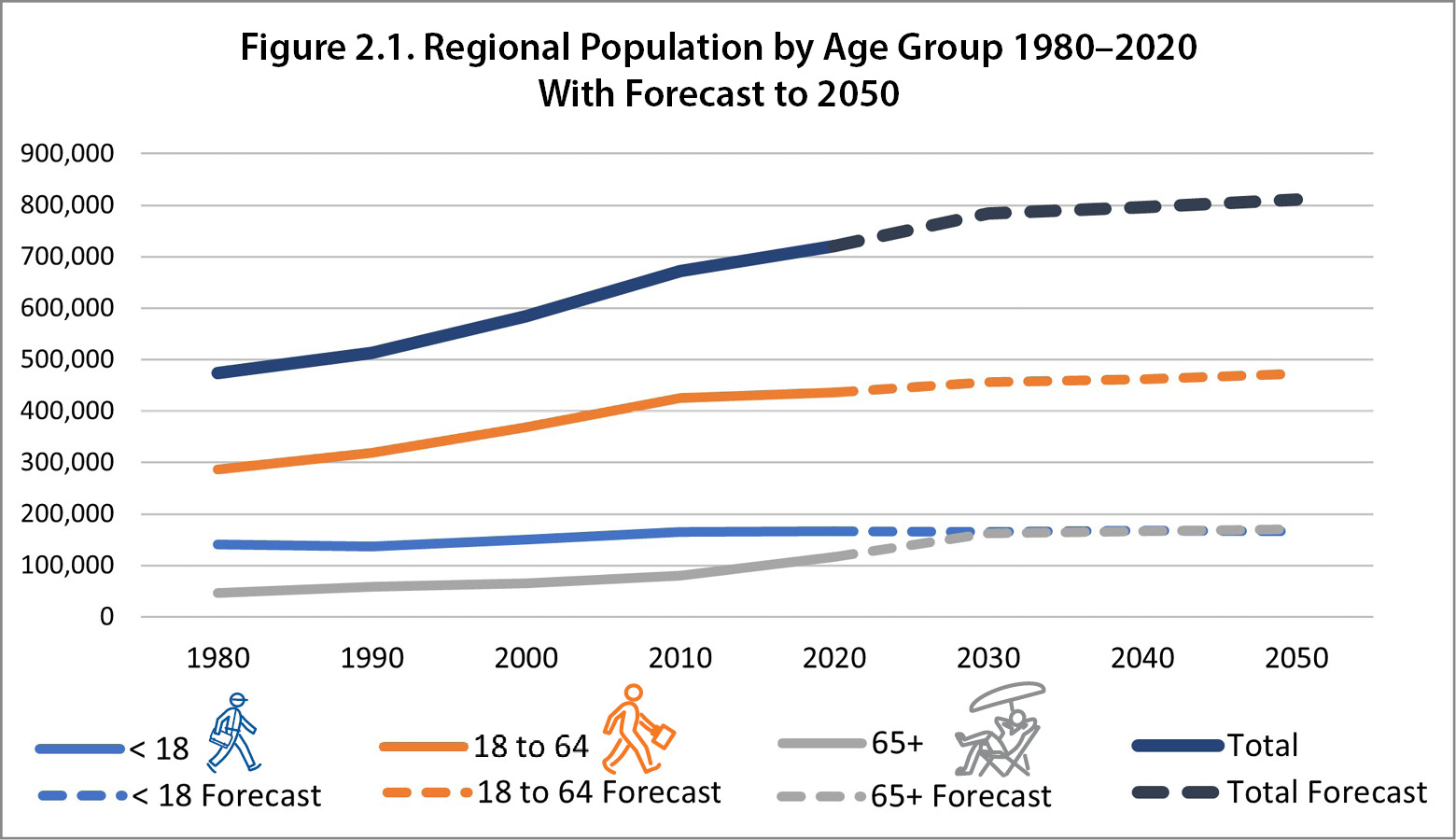
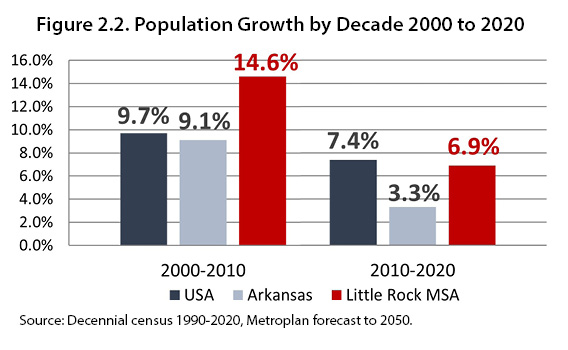
Historically, the growth in the adult and child populations have easily outpaced any growth in the senior population. However, Baby Boomers have flipped the script. By 2030, the number of seniors will match the number of children in the region. Meanwhile, the number of people in prime working age and the total population will stay largely flat. The slowdown in forecasted regional growth past 2030 is based on declining fertility, slightly increasing death rates due to aging of the population, and a continuation of observed 2010–2015 migration patterns.
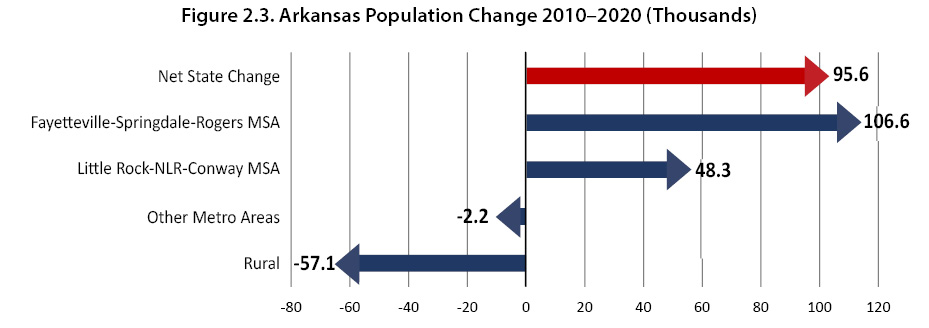
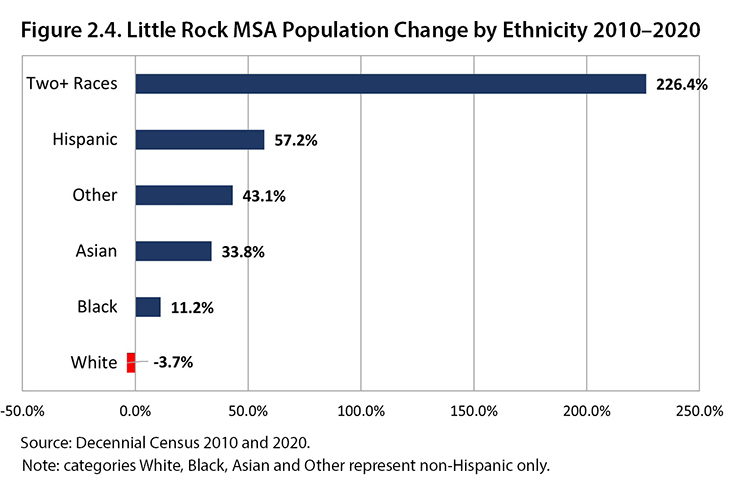
Central Arkansas is consistent with national trends showing growth among Hispanic residents and people of color. The most striking change between 2010 and 2020 was a more than tripling of the regional population identifying as “two or more races” on the Census. The large growth in the percent of people identifying as multiracial in the 2020 Census was consistent with a national trend.
Source: Decennial census 1990-2020.
Pulaski County Is Home to Much of the Region’s Diversity
55.4% of region’s total population
83.1% of region’s African American population
63.7% of region’s Hispanic population
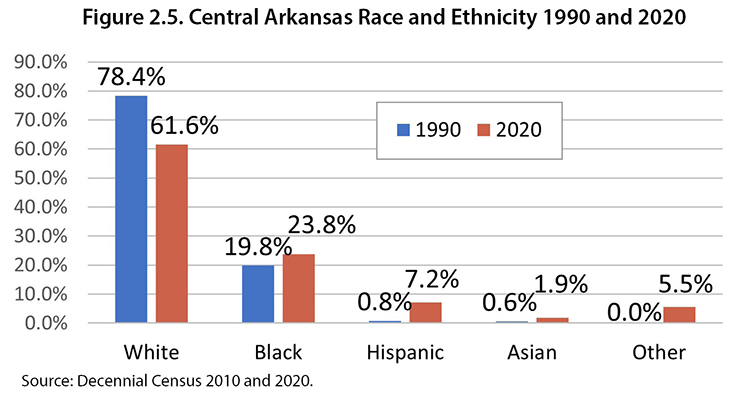
ECONOMY AND EMPLOYMENT
Central Arkansas is…
PRODUCTIVE
Central Arkansas still leads the state’s metro areas in economic output. However, Northwest Arkansas has increased its share of GDP in recent decades.
Source: U.S. Bureau of Economic Analysis, 2021.
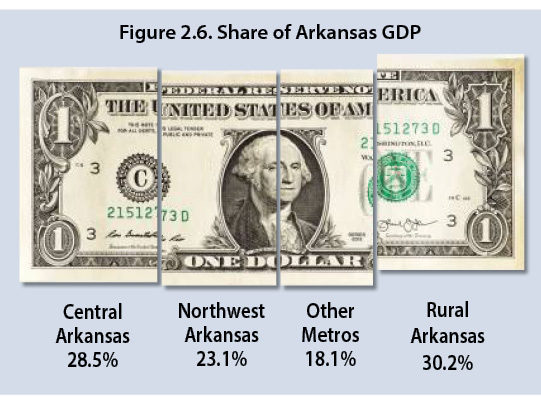
Within the region, Pulaski County jobs pay more, luring commuters into the Little Rock area for work despite perhaps living farther out from the region’s center. Source: CTPP 2012-2016. Note: earnings data represent 2016 dollars, not adjusted for inflation.
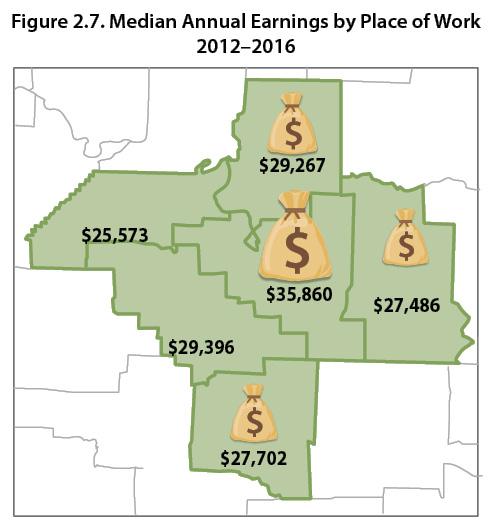
Central Arkansas is…
A HUB FOR 21ST CENTURY INDUSTRIES
The chart at left depicts regional economic changes from May 2019 to May 2023. Note that the biggest job loss was in the government sector. Based on national trends, this is probably a byproduct of changing economic conditions. Government jobs offer less competitive wages, and in the post-Covid labor shortage workers have flocked to better-paying sectors.
Central Arkansas’ growing status as a logistics hub has brought with it a large increase in transportation/warehousing & utility workers, increasing by 5,700 in four years.
The fast growth in the region’s education/health sector outpaced U.S. growth in the same period. The bulk of these jobs are in the health sector.
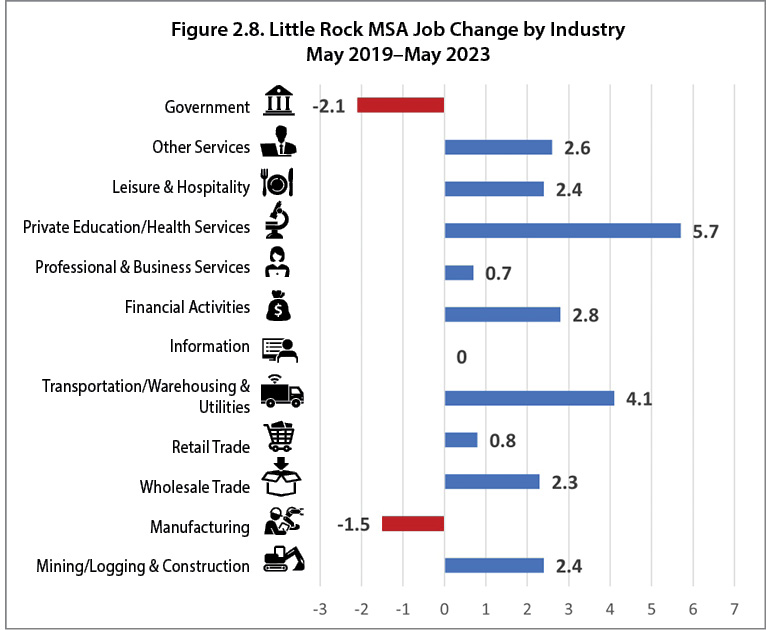
Logistics
In May 2023, the industry publication Business Facilities featured the Little Rock area on its list of Top Logistics Hubs. Central Arkansas’ strategic location in national freight movement and market reach, availability of facilities, and infrastructure improvements factored into its inclusion on the list.
The convergence of interstates, rail lines, pipelines, and the McClellan-Kerr navigation system along the Arkansas River make the region an ideal location for intermodal terminals, which facilitate the transfer of freight between different transportation modes for maximum efficiency. In Central Arkansas, these facilities allow highway-rail freight transfer and transfer at several facilities along the Arkansas River of goods between rail, highway, pipeline, and barge.

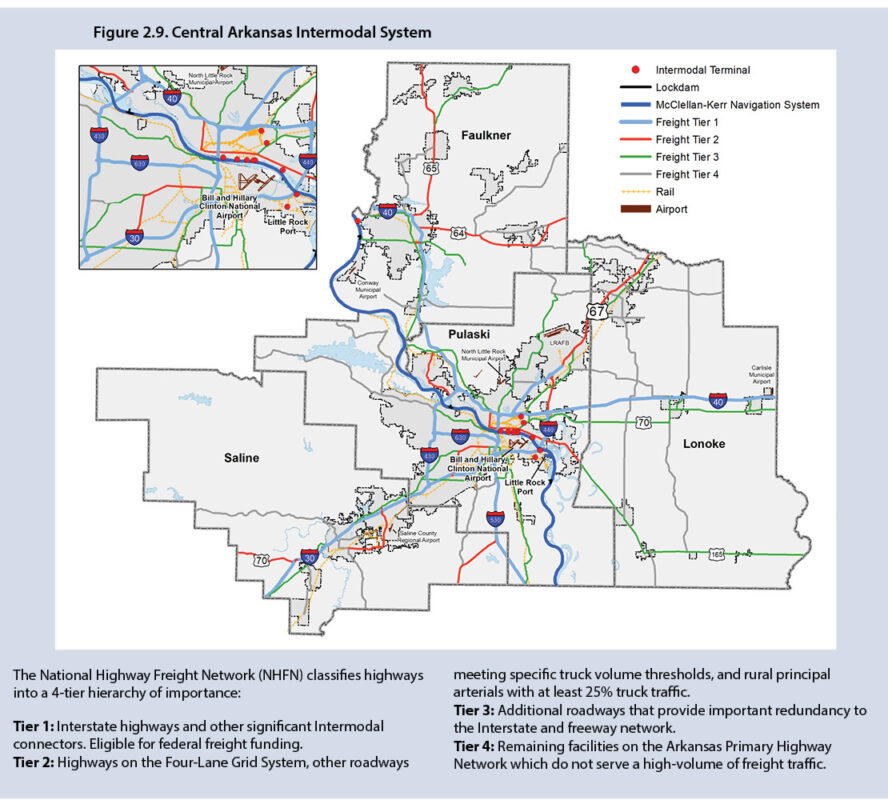
Little Rock Port Authority
Little Rock is an inland city, but has a sizeable port located on the nation’s domestic waterway system. The Little Rock Port is notable for high-quality freight access, with rail, freeway and barge access plus a major urban airport nearby. The Little Rock Port hosts a variety of businesses, mainly manufacturing and warehousing/ logistics operations. Some 3,000 people work at the Port’s largest employer, an Amazon warehouse. Other major firms include Welspun (steel pipe-making) with nearly 1,000 jobs, Delta Plastics (plastic recycling), and numerous other food processing, steel, and assorted other activities. The Port has grown in recent years and has a total workforce of around 8,000. It includes two potential super-sites with over 1,000 acres of land available for future development.
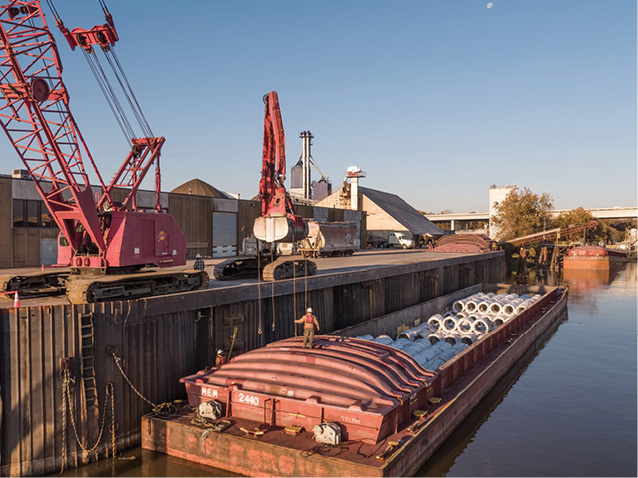
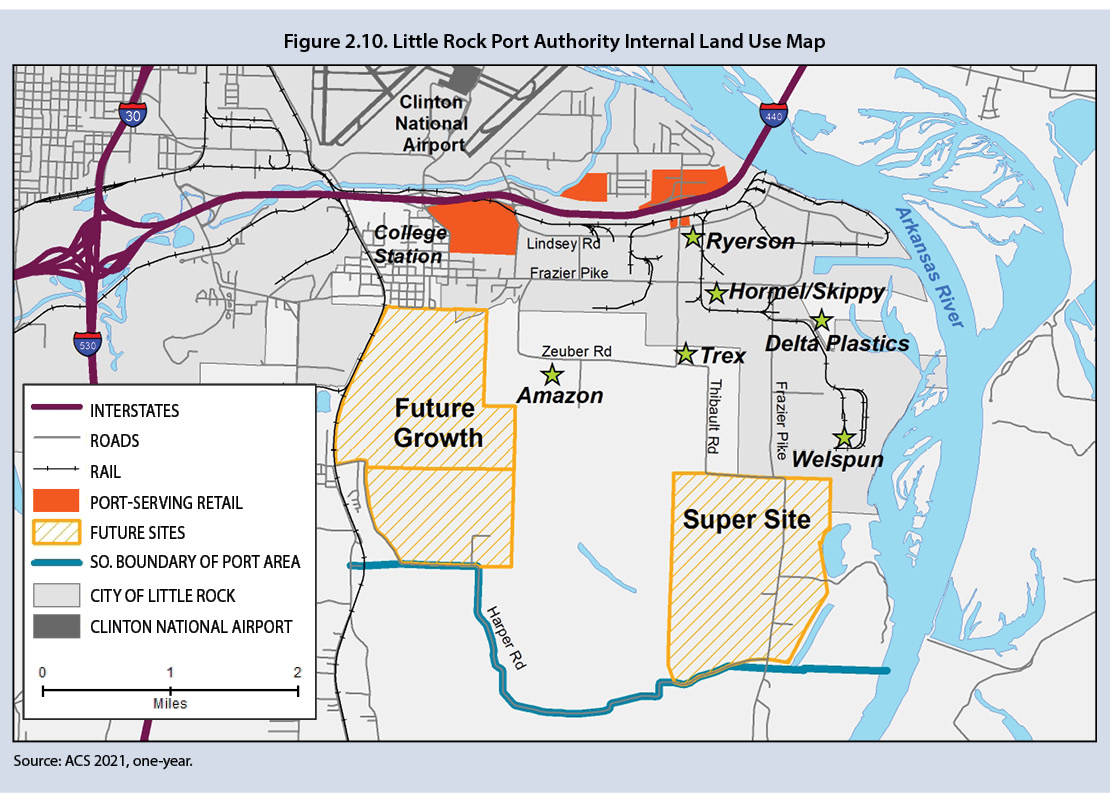
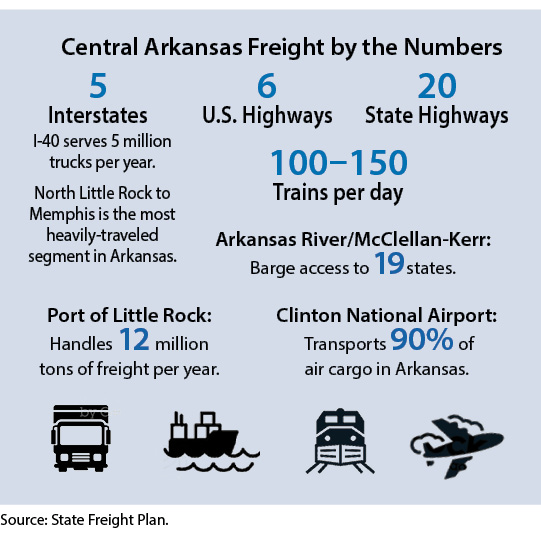
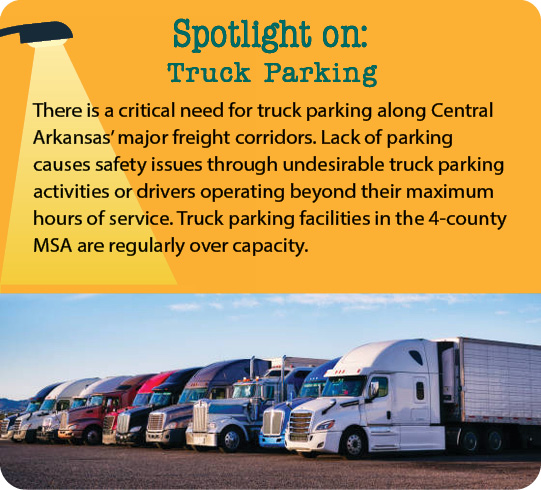
Clinton National Airport
The Bill and Hillary Clinton National Airport saw over one million passenger enplanements in 2022. It is the largest airport in the state of Arkansas, with a total of nearly 7,000 jobs in the airport and nearby. The airport is also the location of Dassault Falcon Jet, a manufacturing firm which does interior finishing on business jets. At last count the firm employed 1,395 workers.1 It is supplemented by other firms in the aircraft modification business, including CAC (Custom Aircraft Cabinets) located in North Little Rock.
1 2023 Arkansas Business Book of Lists.
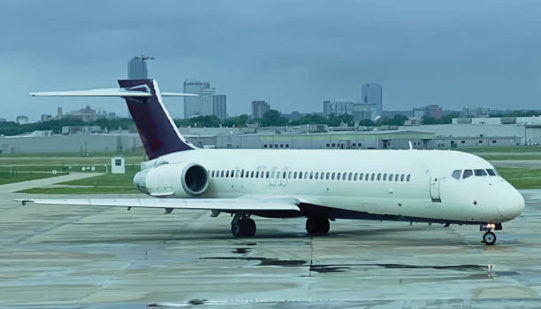
Financial Sector
Central Arkansas has an outsize role in finance and investment. The region’s financial sector has shown solid growth over the past decade, suggesting it is a specialty in which the region holds competitive advantages. During the years 2019-2023, the region’s financial sector showed a net job gain of 12.8 percent, nearly three times faster than the average U.S. gain of 4.4 percent in finance. Little Rock played a key role in early electronic banking, and still plays a significant role in finance research and development. The Little Rock-based Venture Center is a fintech innovation hub of national significance.
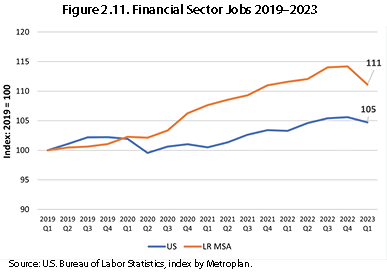
TRANSPORTATION AND LAND USE
Central Arkansas is…
A COMMUTER REGION
Pulaski County remains the region’s employment hub, attracting commuters from all over the MSA. However, only Saline and Lonoke Counties see the majority of their residents commuting into Pulaski County. Faulkner County has become its own job hub, employing 68% of residents within its own boundaries.
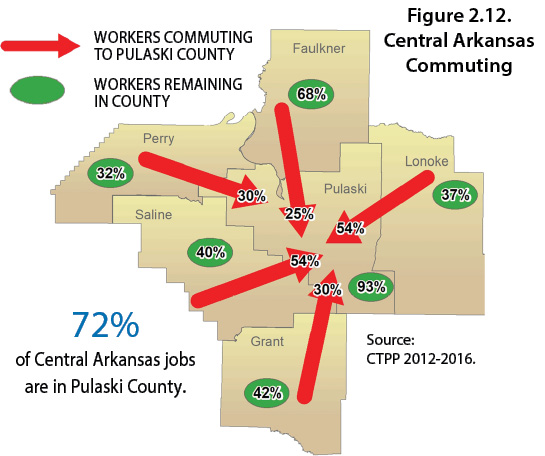
Central Arkansas is…
COMMUTING DIFFERENTLY
Working from home rates tripled in response to the Covid-19 pandemic. While many employees have returned to the workplace, some continue working hybrid schedules while others have relocated to Central Arkansas to enjoy the region’s lower cost of living while keeping their remote job salaries.
Source: ACS 2019 and 2021, one-year.
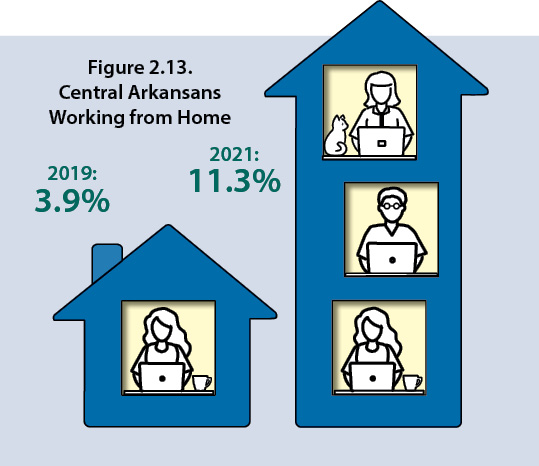
Central Arkansas is…
SPREAD OUT.
Central Arkansas’ population is becoming more decentralized. Over the last 30 years, the population within 5 miles of downtown Little Rock has decreased while the population more than 10 miles from downtown Little Rock has grown significantly. This has led to a greater dependence on the region’s Interstates and freeways.
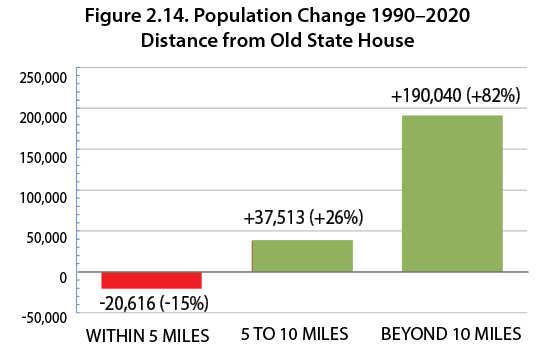
However, walkable urban areas are seeing growth. The area within 1 mile of downtown grew by 331 residents in 30 years, bucking the overall trend of declining density. Residential growth in the River Market, North Little Rock’s Argenta District, Quapaw Quarter, and MacArthur Park neighborhood shows denser, historic neighborhoods do attract new residents and investment.
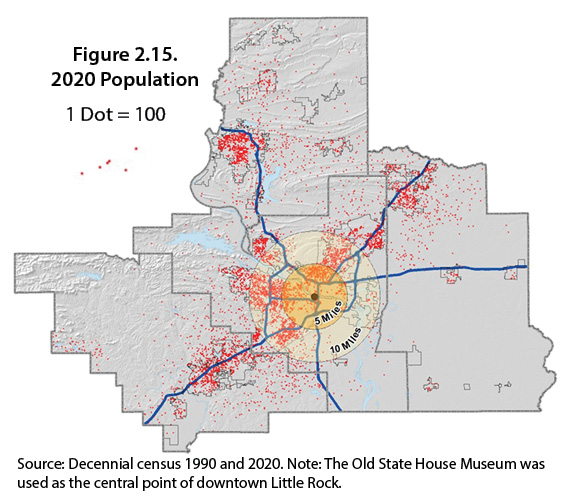
Central Arkansas is…
CONGESTED.
At an average of 37.4 miles traveled per person daily, the Little Rock Urbanized Area (UA) ranked second highest for daily vehicle-miles of travel (DVMT) among the 100 largest urbanized areas in the United States.1
CARTS travel demand model forecasts show total daily hours of vehicle delay will nearly triple between 2015 and 2050. Forecasts are based on projections of a growing regional population with relatively unchanged travel behavior. Most delays currently occur on interstates, but the percentage of delays on non-interstate roadways is expected to increase.
1 Federal Highway Statistics 2021, Federal Highway Administration (FHWA), Table HM-72.
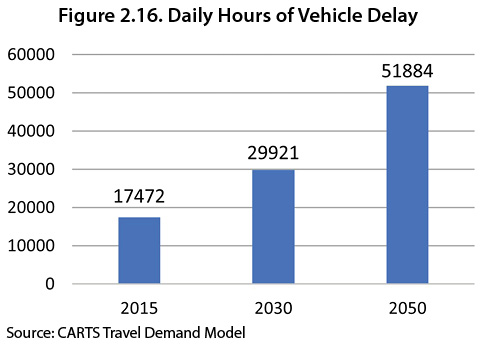
One recent development that will likely impact future forecasts is the dramatic rise of remote working since 2020. The number of workers working from home on one or more days a week has decreased from the 2020 peak but has remained at far more elevated levels than ever seen prior to the COVID-19 pandemic.
Any reduction of trips in the AM and PM peak travel periods can have an outsized impact on reducing congestion and delay. Central Arkansas’ first managed lane on the I-430 bridge is one approach to reducing congestion.

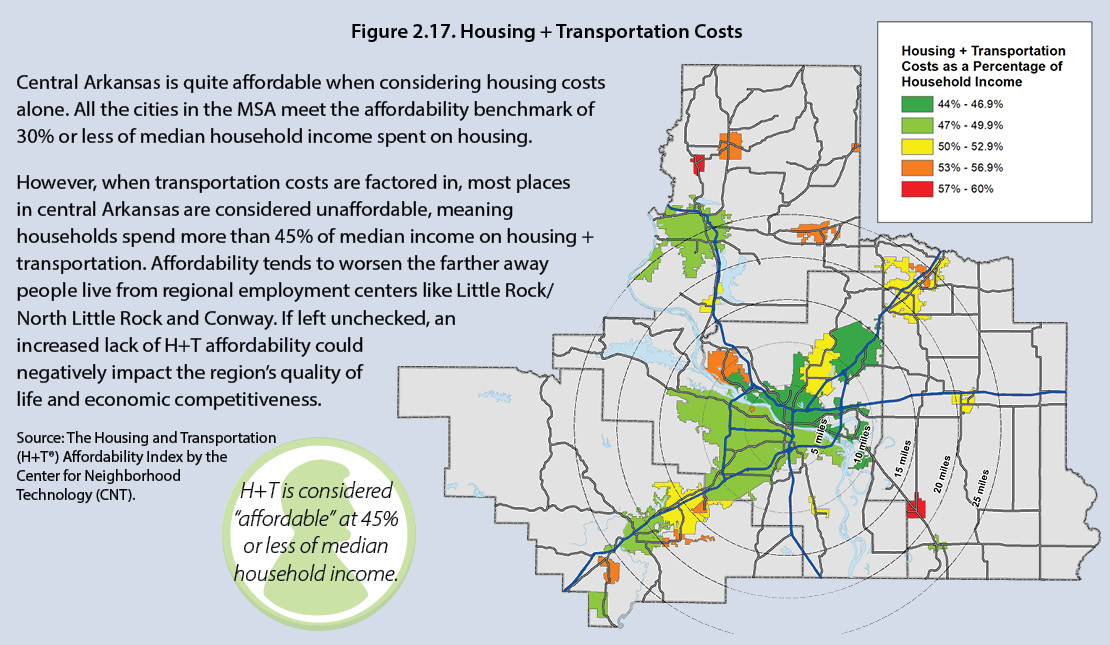
ROOM FOR IMPROVEMENT
INFRASTRUCTURE CONDITION

The Arkansas Department of Transportation is consistently addressing pavement conditions. Approximately 90% of all interstate and non-interstate National Highway System (NHS) lane miles are in the “good or fair” category. However, as our infrastructure ages, fewer lane miles are considered in “good” condition.
It is less expensive to elevate roadways from “fair” to “good” than it is to repair lanes once they have fallen into the “poor” category. Maintaining current infrastructure in at least “fair” condition will be a major focus for ARDOT as roadways continue to age.
Source: ARDOT Highway Performance Monitoring System (HPMS) 2017–2020.
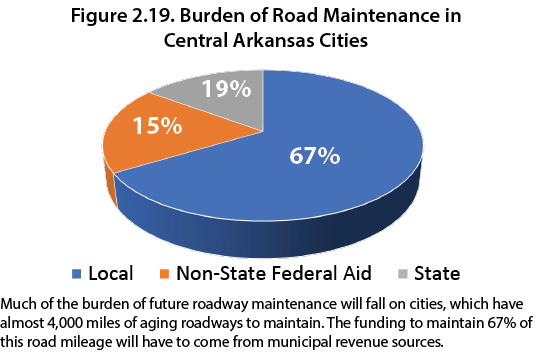
SAFETY
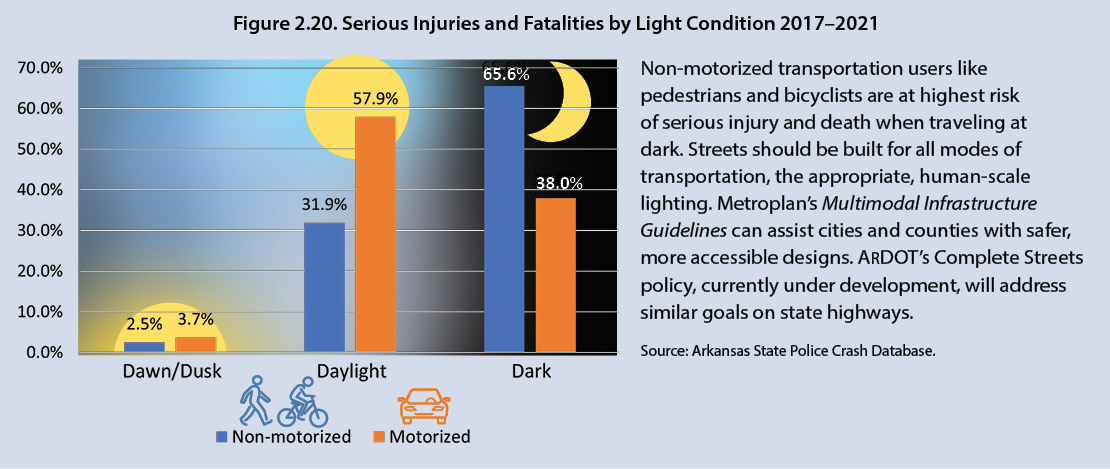
TRANSPORTATION CHOICES
For any mode of transportation to be a practical choice for most Central Arkansans, it must be: 1) easy to access, 2) safe, 3) convenient, and 4) affordable. Currently, the personal vehicle is by far the most heavily-used mode of transportation. However, just because people are not using other modes does not mean they do not want to use other modes. It means our region must do better to make other modes as accessible as the personal vehicle.
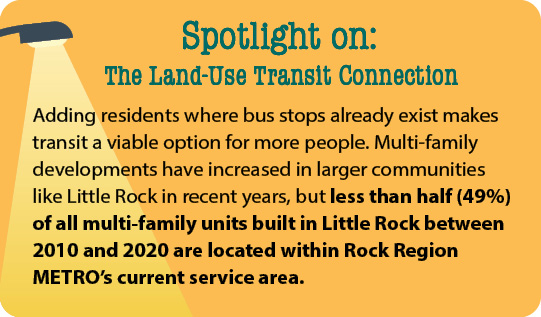

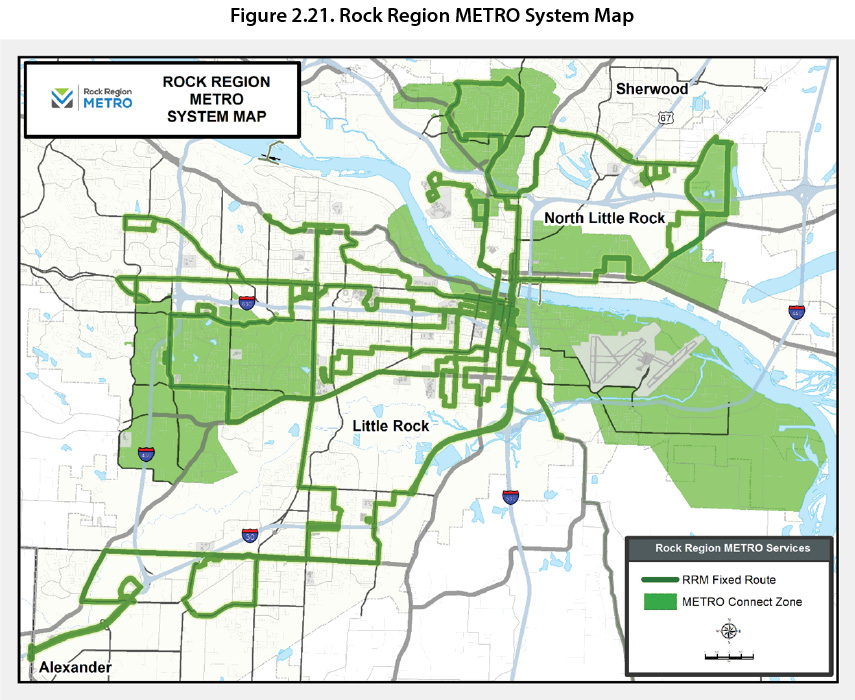
Rock Region METRO
For any mode of transportation to be a practical choice for most Central Arkansans, it must be: 1) easy to access, 2) safe, 3) convenient, and 4) affordable. Currently, the personal vehicle is by far the most heavily-used mode of transportation. However, just because people are not using other modes does not mean they do not want to use other modes. It means our region must do better to make other modes as accessible as the personal vehicle.
Rural Transit Providers
Saline County: South Central Arkansas Transit (SCAT)
Grant County: Southeast Arkansas Transportation (SEAT)
Perry County: Western Transit System (WTS)
EQUITY
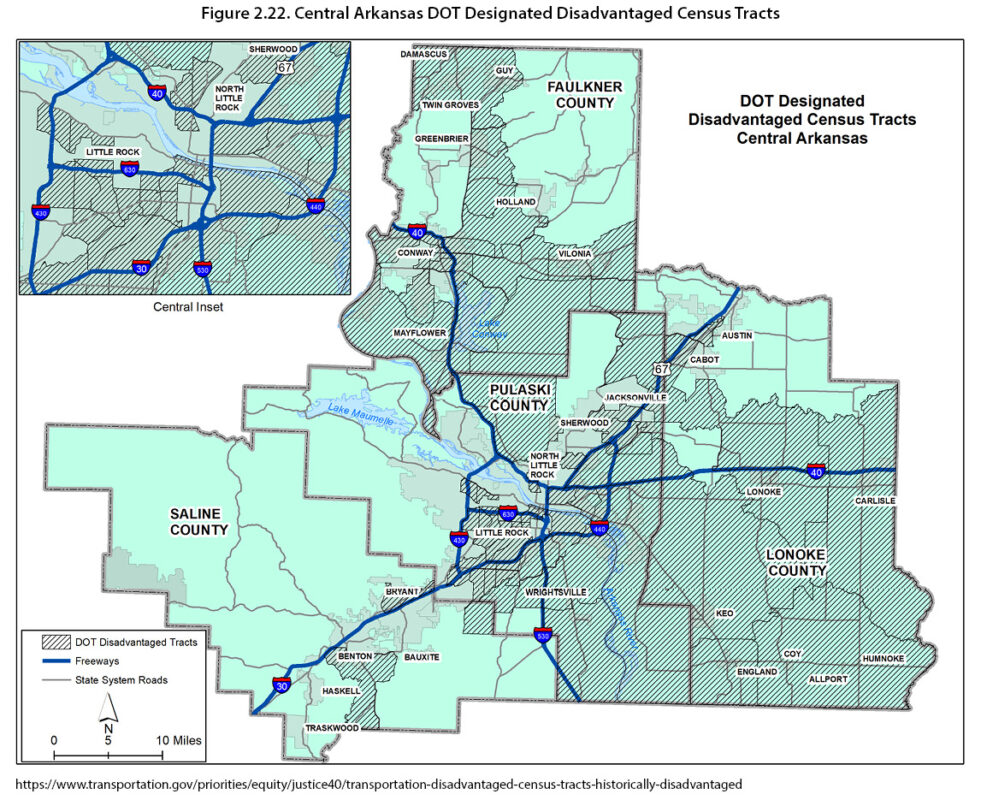
- MTP Chapter 1: Introduction
- MTP Chapter 2: Central Arkansas Snapshot
- MTP Chapter 3: Transforming Mobility
- MTP Chapter 3: Core Policy 1
- MTP Chapter 3: Core Policy 2
- MTP Chapter 3: Core Policy 3
- MTP Chapter 3: Core Policy 4
- MTP Chapter 3: Core Policy 5
- MTP Chapter 3: Core Policy 6
- MTP Chapter 3: Core Policy 7
- MTP Chapter 3: Core Policy 8
- MTP Chapter 3: Core Policy 9
- MTP Chapter 4: Metropolitan Transportation Plan
- MTP Chapter 5: Appendix

